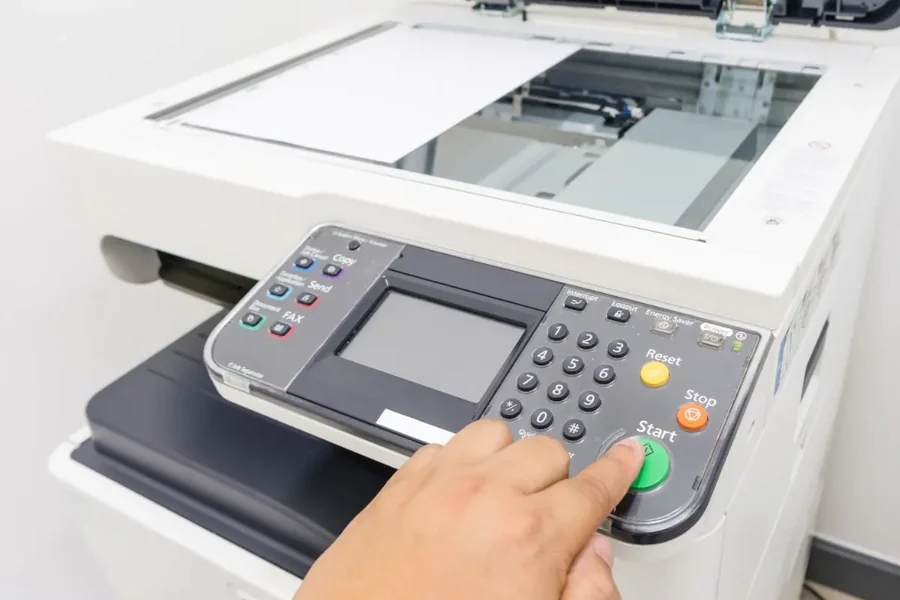Contents
Understanding Photocopiers
Photocopiers remain one of the most important pieces of office equipment in any business. Despite the move towards digital documentation, hard copies are still needed for contracts, presentations, reports and official paperwork. Whether you’re running a small start-up or managing a large enterprise, understanding how photocopiers work, the types available and the key factors to consider will help you make a more informed decision.
How Photocopiers Work
At their core, photocopiers use light, heat and static electricity to reproduce documents. Modern machines have evolved far beyond simple copying, offering integrated features such as scanning, faxing and emailing. Many also connect directly to cloud storage, allowing staff to print or share files digitally. This multifunctional capability transforms the humble copier into a central communication and workflow hub for any modern office.
Choosing the Right Type
When choosing a copier, the first step is to assess your print volume. Smaller offices with light use can manage with compact desktop models, while larger companies producing thousands of pages each week will need robust, high-capacity systems. Understanding your average monthly output ensures you select a machine that can handle the workload without overspending on unnecessary capacity.
Colour or Monochrome
Another major consideration is whether you need colour or black-and-white printing. Monochrome machines are ideal for text-heavy documents, offering lower running costs and faster speeds. Colour models, while more expensive, provide professional results for marketing materials, reports and client presentations. The right choice depends on your balance between cost efficiency and visual quality.
Energy Efficiency and Sustainability
Energy consumption is increasingly important for businesses focused on sustainability. Most modern copiers are built to minimise power usage, automatically entering sleep mode when idle and waking almost instantly when required. Some even support recycled paper and eco-friendly toner options. Choosing an energy-efficient model not only helps the environment but also lowers your operating costs.
Connectivity and Smart Features
Today’s photocopiers offer excellent connectivity options, from USB and Ethernet to full Wi-Fi integration. This allows direct printing from laptops, tablets and smartphones, removing the need for dedicated workstations. Some devices also sync with cloud platforms like Google Drive and Microsoft OneDrive, making remote working and document sharing far more convenient for hybrid teams.
Data Security and Protection
Because modern machines store digital copies of documents, security must be a priority. Look for devices that offer data encryption, password protection and user authentication. Regularly updating firmware and restricting access to authorised users can further safeguard sensitive information. Treating your copier like a computer helps avoid data leaks and ensures compliance with data protection policies.
Exploring Your Options
If you’re reviewing what’s available, it’s worth exploring different types of photocopiers and comparing their features. You’ll find everything from entry-level models for home offices to high-speed, commercial-grade units for large organisations. Compare print speeds, duty cycles, toner efficiency and service agreements to identify the best fit for your business requirements and budget.
Maintenance and Reliability
Even the best equipment requires regular maintenance to stay in top condition. Scheduling professional servicing ensures consistent print quality and prevents mechanical issues. Many suppliers provide maintenance contracts covering parts, toner refills and repairs, helping you avoid unexpected downtime. Simple care routines, such as cleaning the glass and replacing worn rollers, also extend the lifespan of your copier.
Planning for the Future
As your business grows, your printing needs will likely increase. Investing in a scalable solution with modular paper trays, advanced finishing tools and additional memory allows your copier to evolve with your company. Planning ahead ensures that your equipment won’t need replacing prematurely as your operations expand.
Final Thoughts
Choosing the right photocopier is about striking a balance between performance, cost and long-term value. By considering your workload, preferred features and security needs, you can select a machine that boosts productivity while keeping running costs under control. The right copier doesn’t just make copies — it supports a smoother, smarter and more efficient workplace.

